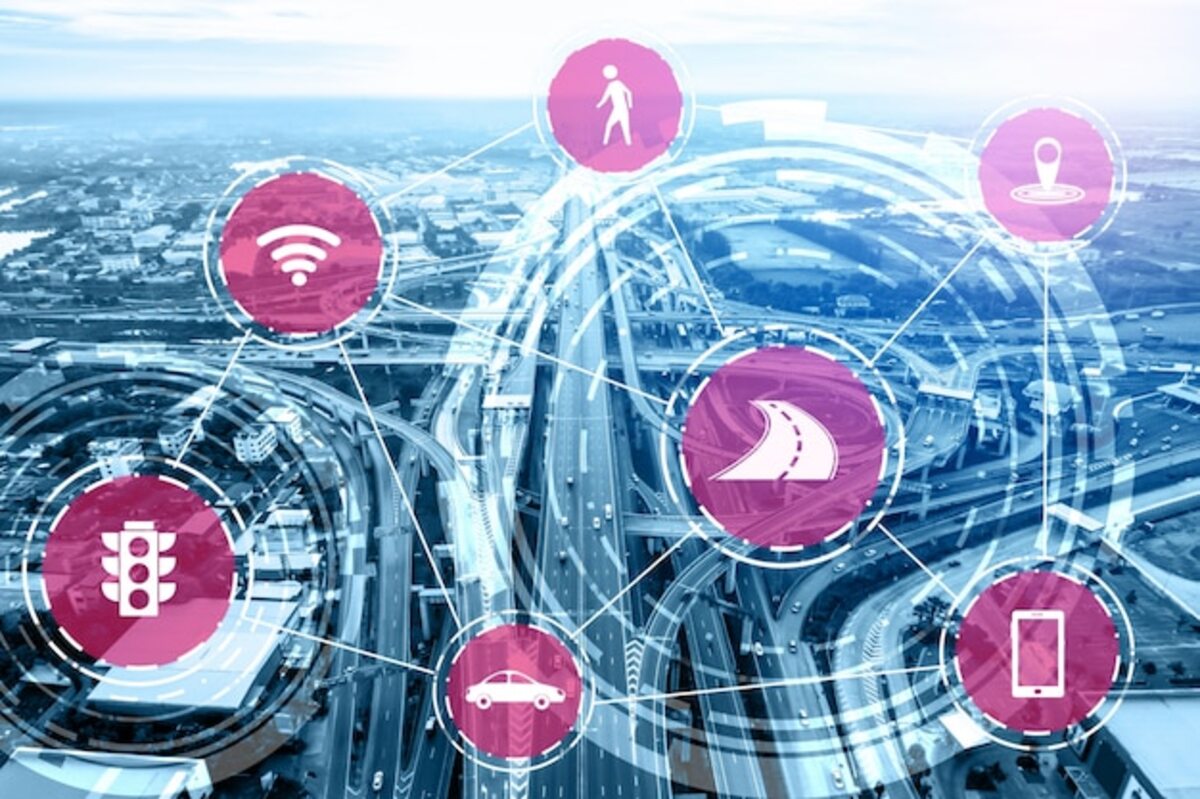Redefining the future: how connectivity drives added value

Redefining the future: how connectivity drives added value in emerging areas. In an increasingly interconnected world, areas that were once considered peripheral are experiencing an unprecedented boom. Connectivity, both digital and physical, has become the engine that transforms these emerging zones into true magnets for investment and development. As infrastructures improve and technological initiatives are promoted, the added value of these regions skyrockets, offering unparalleled opportunities for those looking to invest in the future.
The importance of digital infrastructure in emerging areas
Digital infrastructure in emerging areas is a crucial factor for economic and social development. As technology advances, areas that lacked access to the internet or digital services are experiencing significant changes. The implementation of high-speed networks, the availability of mobile devices, and access to digital platforms not only improve the quality of life for residents but also foster a more attractive environment for investors. This modernization enables local businesses to compete in broader markets and access vital information for their growth, which is essential in a world where speed and efficiency are critical for success.
Moreover, a solid digital infrastructure opens the door to new educational and job opportunities. With access to online resources and digital training programs, residents of these regions can develop skills that were previously beyond their reach. This not only contributes to individual empowerment but also creates a more skilled workforce ready to face the challenges of the future. In this context, emerging areas become centers of innovation and entrepreneurship, attracting technology companies and investors interested in capitalizing on the human and economic potential these communities have to offer. Thus, connectivity becomes an essential engine for enhancing value and redefining the economic future of these still undiscovered areas.
2. How access to the internet changes local dynamics
Access to the internet has revolutionized the way communities interact, work, and develop. In previously isolated areas, digital connectivity has allowed residents to access a wide range of resources, from online education to job opportunities that were once out of reach. This not only improves the quality of life for the inhabitants but also attracts new businesses and entrepreneurs who see growth potential in these regions. In this way, internet access becomes a catalyst for local economic transformation, raising the expectations and aspirations of its inhabitants.
Additionally, connectivity fosters greater civic and community engagement by facilitating communication between citizens and their local governments. Through digital platforms, individuals can express their opinions, organize for community initiatives, and access relevant information about public services and government programs. This flow of information not only empowers citizens but also promotes a culture of transparency and collaboration between authorities and residents. As a result, social dynamics change significantly, creating more cohesive environments where sustainable development can thrive due to the active commitment of the community.
3. Transportation projects that transform communities
Transportation projects are a key piece in the transformation of communities, as they not only improve the mobility of their inhabitants but also promote access to services and economic opportunities. The construction of new roads, metro lines, or efficient public transport systems connects previously isolated areas with urban and commercial centers. This type of infrastructure not only benefits residents by facilitating their daily commutes but also attracts businesses and investors who see untapped potential in these areas. As connections improve, social and economic dynamics are generated that revitalize the community as a whole.
Additionally, transportation projects are often accompanied by planned urban development that prioritizes sustainability and quality of life. By implementing innovative solutions such as bike lanes, electric trams, or carpooling systems, an alternative mobility culture is promoted that reduces traffic and pollution. These initiatives not only increase land value in surrounding areas but also transform public perception of emerging communities. When residents feel they have easy and quick access to essential resources, from education to healthcare, an environment conducive to sustainable economic and social growth is generated.
4. The role of technology companies in urban growth
The role of technology companies in urban growth is fundamental for the transformation of emerging areas. These companies not only bring innovation but also create an ecosystem that promotes investment and sustainable development. By establishing headquarters in previously underdeveloped areas, technology companies generate skilled jobs and attract a young and dynamic population seeking professional opportunities. The creation of technology hubs allows these communities to benefit from a constant flow of knowledge and resources, thus elevating their profile in the real estate market and increasing their value.
Additionally, technology companies play a crucial role in improving local infrastructure. By investing in advanced communication networks and smart urban management systems, they facilitate more efficient connectivity that positively impacts both residents and local businesses. This digital transformation not only optimizes public services such as transportation and energy but also fosters an environment conducive to entrepreneurship and inter-business collaboration. As a result, areas that adopt these technologies experience exponential growth in their economic value, positioning themselves as attractive destinations for investors and developers alike.
5. Foreign investments: what are investors looking for?
Foreign investors, when analyzing new opportunities, primarily look for areas that offer a solid and developing infrastructure. Connectivity, whether through efficient transportation networks or access to high-speed internet, is a determining factor. These conditions not only facilitate trade and communication but also create a favorable ecosystem for economic growth. Areas that have improved their connectivity tend to attract both local and international companies, resulting in a significant increase in demand for properties and services. This phenomenon generates an attractive appreciation for those willing to invest.
In addition to infrastructure, investors are attentive to the demographic and socioeconomic trends of emerging regions. They seek places with young and dynamic populations that demand new products and services, as well as flexible labor markets that promote innovation. Political and economic stability also plays a crucial role; investors prefer environments where policies favor entrepreneurship and protect their assets. In this context, areas with a clear vision for the future are often more sought after by those looking to diversify their portfolios and engage in long-term projects that promise sustainable returns.
6. Success stories: cities that have managed to leverage their connectivity
Cities that have been able to leverage their connectivity are rewriting the rules of urban development. A clear example is Medellín, Colombia, which has transformed its image through an innovative transportation network and digital inclusion projects. The implementation of systems like the Metrocable has not only improved access to previously isolated neighborhoods but has also attracted investment in technology and entrepreneurship, leading to a significant increase in real estate value. The city now stands as a model for other metropolises in Latin America and beyond, demonstrating that connectivity can be a catalyst for economic and social development.
Another highlighted case is that of Barcelona, Spain, which has maximized its technological infrastructure to become a European innovation hub. Through the promotion of smart city initiatives, where digital solutions are integrated into urban management, Barcelona not only improves the quality of life for its citizens but also attracts talent and international investment. The interconnection between various areas—from mobility to public services—has resulted in an attractive environment for both startups and established companies, thus increasing the added value of its properties and fostering a dynamic ecosystem that continues to thrive. This approach demonstrates how strategic planning based on connectivity can radically transform the urban landscape.
7. Impact of teleworking on local real estate demand
Remote work has transformed the way people think about their place of residence, expanding options beyond traditional urban areas. This shift in the work dynamic has led to an increase in local real estate demand in regions previously considered less attractive. Families and professionals are now seeking homes that offer not only comfort and space but also good internet connectivity and access to essential services. This has driven the development of new communities and real estate projects in emerging areas, where prices are still affordable compared to large cities.
As remote work becomes a viable option for a growing number of workers, migration patterns are changing. Buyers are no longer limiting their search to properties near their offices; they are now considering factors such as quality of life, the natural environment, and technological infrastructure. This phenomenon is creating a domino effect in the local real estate market, where areas with good digital connectivity are increasingly valued. As a result, developers are responding to this demand by investing in infrastructure and technology improvements, which not only increases the value of these properties but also transforms the overall perception of these emerging locations.
8. Future trends: where is connectivity heading?
As connectivity continues to evolve, future trends point towards an even deeper integration between the physical and digital worlds. Emerging areas are adopting innovative technologies such as the Internet of Things (IoT), 5G networks, and smart city solutions, which not only enhance the quality of life for their inhabitants but also attract businesses and investors. This transformation is creating an ecosystem where efficiency in transportation, access to digital services, and sustainability are priorities, redefining how we interact with our urban and rural environments. Connectivity thus becomes an essential factor that determines not only real estate value but also the economic dynamism of these areas.
In this context, collaborative spaces and remote work are gaining prominence. The ability to work from anywhere has led many people to consider moving to less urbanized but highly connected regions. This not only diversifies job opportunities but also drives an increase in the demand for housing and services in these areas, enhancing their appeal to investors. Future connectivity promises to create more inclusive and resilient communities where technology and collaboration foster sustainable development. This shift will not only benefit local residents but will also attract significant investments that will solidify these areas as emerging economic hubs on the global map.
9. Sustainability and technology: building a green future
Sustainability has become an imperative in building a greener future, and technology plays a crucial role in this process. As emerging communities adopt innovative technological solutions, they are becoming examples of how it is possible to grow economically without compromising the environment. The implementation of clean technologies, such as solar panels and smart water management systems, not only reduces the ecological footprint but also improves the quality of life for local residents. These initiatives are not only attractive to responsible investors but also increase property values by aligning with the growing market demands for sustainable buildings.
Moreover, digital interconnectivity allows these emerging areas to access a variety of resources and information that were previously difficult to obtain. Technological platforms facilitate the exchange of best practices in sustainability among communities around the world, creating a virtuous cycle where each region can learn and improve its own ecological efforts. This not only reinforces local commitment to the environment but also creates job opportunities in emerging green sectors. In this way, the fusion of sustainability and technology not only contributes to a healthier environment but also directly drives the economic and social value of developing areas.
10. How to evaluate the potential appreciation of an emerging area
To assess the potential appreciation of an emerging area, it is essential to start by analyzing the existing infrastructure and the short- and medium-term development plans. Investments in transportation, such as new roads, subway lines, or airports, not only improve accessibility but also increase the appeal for businesses and residents. Furthermore, it is crucial to observe the expansion of basic services like water, electricity, and telecommunications, as these elements are vital for attracting both new inhabitants and businesses looking to establish themselves in a favorable environment. The presence of planned or ongoing urban development projects can also be a significant indicator of the expected growth.
Another key aspect to consider is the demographic and socioeconomic profile of the local population. An increase in the arrival of young professionals or families with middle and high incomes often correlates with a growth in the demand for housing and services. Additionally, the business climate of the region should be taken into account; areas that promote startups and have tax incentives tend to attract significant investments. Finally, conducting a comparative study with already established areas can provide valuable insight into the realistic appreciation potential. With this well-analyzed information, investors will be able to make more informed decisions about where to direct their capital to maximize their returns in the future.



